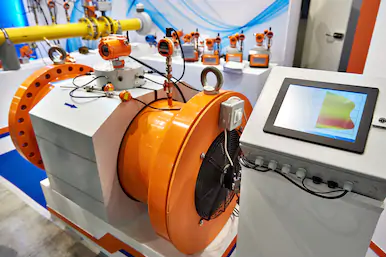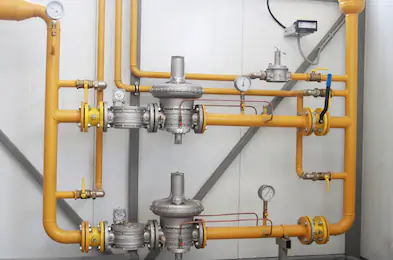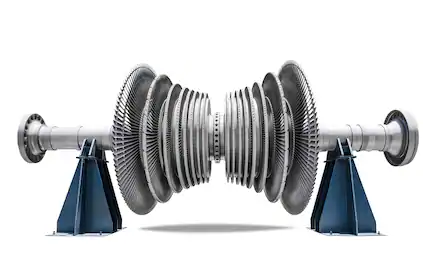Gas treatment systems have great variety of types and can fulfill a lot of functions. The most important of them will be described below.
Filtration
This function is the first in any gas treatment system. Removal of solid particles from natural or associated oil gas can be done with the help of mechanical reticulated or cyclone filters.
Mechanical reticulated or cyclone filters allow to remove only solid particles whereas coalescent filters can remove water and the heaviest hydrocarbon moisture drops.

Cooling or Heating
Gas cooling is used for removal of water and most heavy hydrocarbon condensate by cooling down to the dew point temperature. After cooling the gas composition will be decreased for both water and hydrocarbon dew points. Deep cooling is used in technology of liquefied natural gas production.
Gas heating is used in winter period to avoid emerging of condensate with the following condensate freezing in pipelines. Heating provides necessary gas temperature before going into gas turbines and boilers. Gas temperature increase can be provided with the help of electrical or hot water/glycol heaters.
Application of any type of heater requires availability of thermal or electrical power at a site. The source of power will depend on the gas flow and temperature difference. The main requirement for gas equipment is that the gas temperature should be 10…15 ͦC higher than the water and hydrocarbon dew point.

Gas Flow Measurement
Flow meters can be of the two main types: technological and commercial. For technological flow meters its main function is measurement of gas quantity used by turbines, boilers and other equipment.
The data from technological flow meters are used for calculation of the efficiency and help to calculate the economical parameters of gas equipment. Flow meters of this type don’t transfer data to gas supplying companies for the consumed gas. Commercial flow meters are used for payment calculations with gas supplying companies for the consumed gas. Flow meters can be of different types: turbine, ultrasonic, coriolis and so on.

Pressure Reduction
Reduction pressure blocks are among the basic elements of any gas treatment system. As a rule reduction blocks are installed for pressure decrease and passing the demanded gas flow.
When there is a considerable pressure difference and big gas flow at a reduction unit, turbo expander can be used instead of a reduction unit. In this case useful mechanical energy on the expander shaft can be received.
To avoid condensation during reduction process gas heaters should be installed before pressure reduction units.
Gas distribution stations and big gas treatment blocks can contain a few pressure reduction units for different purposes, for instance one reduction unit for feeding gas boiler and another one for feeding gas turbine.
Temperature decrease occurs during pressure reduction process. Pressure reduction for each 0,1 MPa gives temperature fall for 0,55 °C. Big gas pressure drop and subsequent temperature decrease can be followed by intensive condensation in case of associated oil gas with a low methane number. After filtration this condensate can be used as fuel for spark ignition engines and as well as a raw material for chemical production.
Usually automated gas distribution systems contain pressure reduction units from main gas pipelines 5,5…7,5 MPa, commercial flow meter for each line, gas heaters, a few output lines for different pressure and flow.

Gas Dehydration
When there is a lot of water or heavy hydrocarbon in gas, for instance gas is saturated from a gas/oil well, coalescent filters sometimes cannot remove moisture from gas effectively. In this case glycol dehydration should be used.
These are primarily separated systems with glycol spraying into saturated gas and subsequent water evaporation from glycol in reboilers. After a reboiler the dehydrated glycol will be returned into the cycle and the dried gas can be transported to the next processing stage.
All gas treatment units mentioned above should have reservation to exclude interruption of gas provision to customers because of malfunction of any gas treatment stage. Generally one operational and one spare line are used in all gas treatment stages. Flow capacity of each line should be 100% of the maximum possible gas flow.
Sometimes a layout with 3 lines of flow capacity 50% each is used. There will be 2 in operation and 1 in spare line in this case.

Since gas treatment systems have great variety, Compressorturbo helps in finding the most optimal gas treatment for any possible challenge from a customer.
